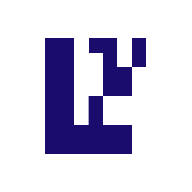Why do we say that Zircuit is a unique layer2?
1) It is built on the OP Stack Codebase but does not belong to the OP super chain camp?
2) It belongs to the OP-Rollup chain but does not highlight fraud proofs, having a strong ZK imprint from its name to technical details?
3) Clearly unrelated to AVS security consensus mechanism yet provided $Eigen stakers with airdrops, etc.
Next, let me briefly explain my understanding of the Zircuit chain:
1) OP Stack clearly provides a basic technical framework for quickly launching layer2, but many chains, including Metis, Mantle, and Zircuit, have used the OP Stack Codebase technical framework without being integrated into the Superchain strategic route.
The reason is simple. Although the super chain will enjoy resource benefits from the OP super alliance, its technical autonomy and flexibility will also be limited, such as with fraud proofs. Many layer2 chains in the OP Stack camp have yet to fully implement Fraud Proof systems, and there is a significant connection between their choice of framework dependence and the neglect of autonomous development.
Zircuit is a typical example. Although marked as OP-Rollup Type on L2beat, its overall technical architecture and brand tone leave a strong impression of ZK, leading many to classify it within the ZK-Rollup category.
The preference for ZK technology framework is mainly because the support of ZK technology can make the OP-Rollup framework more reliable. After all, an OP-Rollup without a functioning Fraud Proof is hard to call a safe and reliable chain. However, with a ZK Proof system, the trust environment for state changes built upon ZK technology can effectively compensate for its shortcomings in optimistic challenge proofs.
Therefore, strictly speaking, it should be classified as a hybrid Rollup. In fact, this kind of hybrid Rollup architecture design is not new; Metis, another emerging layer2, also focuses on differentiation based on this by providing users with a fast withdrawal channel through a ZK-Rollup Router without waiting for a 7-day challenge period.
2) Recently, Vitalik praised Starknet's performance in optimizing Blob Gas pricing mechanisms and block state compression. This is actually another optimization direction after layer2 needs to enhance cross-chain interoperability: improving its data structure and performance handling details. As Ethereum's mainnet upgrade path tends to lean towards lightweight ZK-SNARKs, if layer2 chains can adeptly apply ZK technology at the underlying level, there will be enhanced performance in data structure, state compression, message transmission, etc., bringing them closer to the future strategic direction of Rollup-Centric.
Therefore, as a rising star, Zircuit has made many technical optimizations in details since its launch, such as:
1. Sequencer Level Security Enhancement (SLS): Many layer2 chains face issues such as Sequencer centralization and MEV, which have hindered the stable development of financial applications like DeFi in the layer2 environment.
In light of this, Zircuit has uniquely designed a preventive security architecture for the Sequencer. Transactions in the Mempool undergo malicious transaction monitoring, and malicious transactions are subjected to an isolation zone with multiple release conditions to ensure normal transactions are executed safely and smoothly. This method of adding a layer of security pre-check in the Sequencer component can identify potential MEV behavior and provide a fairer execution environment for DeFi applications.
2. Modular Proof System: Compared to OP-Rollup chains, ZK-Rollup paradigm layer2 chains have significant advantages in Finality, but they also incur additional costs for computation, generation, and verification of Proofs. These costs are not reduced through Blobs blocks on the mainnet to lower layer2 Gas. Therefore, ZK-Rollup layer2 needs to find ways to reduce ZK Proof costs. In response, Zircuit adopts two paths, Template Proofs and Proof Aggregation, to optimize costs: Template Proofs are a transitional solution that uses simplified proof templates to maintain the update verification of the base state without generating complete proofs for each Batch to lower costs; Proof Aggregation collects multiple unverified proof tasks and generates proofs in parallel through specific circuits and general circuits, ultimately aggregating these proofs into a single proof for unified verification. Clearly, this setup of specific proprietary circuits to adapt to different proof types in the Proof system can significantly reduce the costs of generating and verifying ZK proofs. This is similar to how Starknet uses the STARK system, zkSync employs recursive systems, etc., which can better reduce ZK costs.
3. AI-Enabled layer2: As a newer layer2 chain, Zircuit is naturally suited for the integration of AI elements such as AI model inference and AI Agents. This is reflected in the AI model analyzing suspicious transactions in the SLS sorter, automating isolation or pausing protocols in special situations, etc.
Above.
As for why Zircuit is collaborating with Eigenlayer for airdrops, it is difficult to see any clear technical perspective. I prefer to view it as a strategic support from Zircuit, this layer2, to Eigenlayer in terms of enhancing Ethereum's AVS security. Looking at it from a broader perspective, AVS, as a fast security consensus infrastructure, may help Zircuit's SSL system quickly integrate into other layer2 ecosystems at some point.







